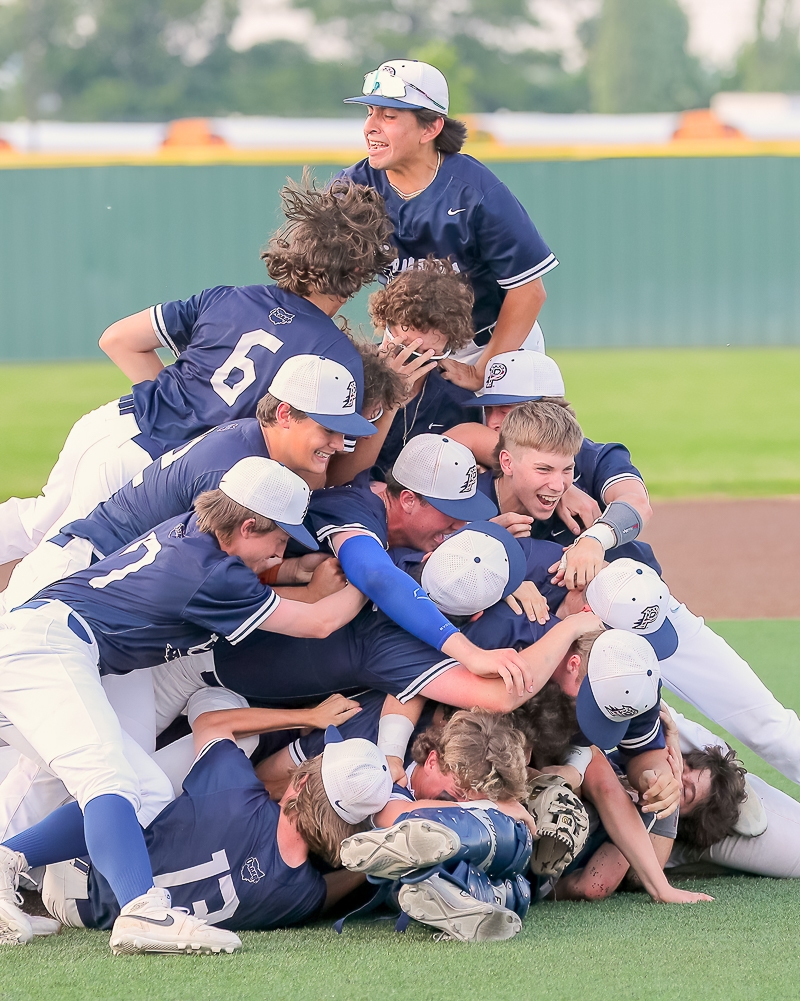
Are we pursuing more champions in baseball at the expense of the baseball, itself? There are two schools of thought. (Press Pros Feature Photos)
As the end of the high school sports season, some observations on the last sport on the calendar, visibly impacted by seven divisions and the diminished skills necessary to play the game at a higher level.
 Guaranteed…this will ruffle a few feathers.
Guaranteed…this will ruffle a few feathers.
They’ll write to tell me they’ll never read again.
I can close my eyes and see the dissenters…who scoff at the suggestion of ‘watered down’, what Texans call all hat, and no cattle.
Give us quantity over quality.
Those who tell me that there’s too much focus on competition, that you can’t have too many champions, regardless of how you get them.
 Trophies for everyone, and what does it hurt?
Trophies for everyone, and what does it hurt?
But as the school year closes on seven divisions of nearly every high school sport, I’m going to make some observations on what seven divisions is doing to high school baseball, not unlike what it’s done to other sports. Not opinion, but that which is there for the seeing, like with football, volleyball, basketball, and soon, I fear…croquet!
Because, if you’re not willing question the watering down impact that’s produced combined scores of 112-0 in the last two Division VII football finals…and if you call an 80-1 mashing in a first-round basketball game just a bad shooting night by the team with 1…baseball, as the late hall of fame coach Lou Brunswick once told me, is a sport where you can’t hide what you can’t do. The game will inevitably find you – what Casey Stengel once famously asked about his 1962 New York Mets team that lost 120 games, “Can’t anyone here play this game?”
I’m not Casey Stengel, but when I watch tournament baseball this spring the things you look for to gauge a team’s qualities are simply diminished. I watch pre-game infield practice and see outfielders who not only can’t hit the cutoff man…they can’t get it to the cutoff man for lack of arm strength.
I see kids that probably wouldn’t be playing baseball when there were four divisions. Because, the competition for roster spots and playing time was more concentrated, and the kids who played in the spring were the same kids who played the previous summer to sharpen their skills.
I see catchers who can’t throw the ball 127 feet to second base without winding up and taking a couple of crow-hop steps to get it there.
I see infielders who can’t make the throw from shortstop and third to first base without bouncing it; and second basemen who can’t turn the double play.
And the reason they can’t throw and turn the double play is because they haven’t played enough baseball, and therein lies another issue with the present state of amateur baseball.
 Baseball is still popular with kids at a young age who enjoy participation because it’s something they can do with their friends – imitate what they see on TV. And you see this in communities across the state with a successful legacy of local kids playing baseball together.
Baseball is still popular with kids at a young age who enjoy participation because it’s something they can do with their friends – imitate what they see on TV. And you see this in communities across the state with a successful legacy of local kids playing baseball together.
But at age 12 to 14 kids from other parts run out of opportunity to play. Communities that once boasted as many as twenty Little League teams now have two…and they’re ‘pay to play’ teams, also known as ‘travel ball’, or ‘select teams’. If you don’t have $2,000 you’re out of luck. Worse, kids aren’t naive and if they’re not asked to play they get discouraged and look for other pastimes. So when the high school season comes around in the spring, that six weeks may be their only exposure to baseball all year.
Not convinced?
No one who grew up playing baseball in Piqua ever believed there’d come a day when there wouldn’t be an American Legion baseball team, because everyone who played in Piqua aspired to play for Post 184 – for Jim Hardman and Rick Gold – for generations. And whether they played or not, they were at the park when Post 184 did play. But now there is no Legion ball in Piqua, an apocalyptic blow to community baseball that doesn’t portend developmental opportunities for additional divisions of high school baseball.
Professional scouts will also tell you that we’re losing much of the gene pool for the future – the ‘tweeners and ‘late bloomers’ – who give up the game before their baseball skills show up as a high schooler. That happened with four divisions, as well, but now with seven it’s more pronounced.

Publisher Sonny Fulks writes OHSAA sports and Ohio State baseball for Press Pros Magazine.
You only develop arm strength by throwing a baseball, repeatedly.
You learn hand-eye coordination to catch the ball by doing it, repeatedly.
And you learn to hit the ball by in same manner…no different than lifting weights to get stronger.
Kids aren’t doing enough of it, and it’s brought us to the point where we have more teams than we have skills to play the game at a champion’s level.
It’s not a theory, but fact, with no possible solution in the absence of a more fertile, and committed culture towards baseball, where it takes at least one of the five tools to be immersed in the game’s cache’ – run, catch, throw, hit, and hit with power. And the farther we kick the can down the road, where trophies mean more than how you to earn them…it’s more hat, and no cattle.
Some will always overachieve…set themselves apart. That’s what people do. But that’s not the goal. That’s what the dissenters hate, the same people who say they know baseball.
Those who really know…know baseball deserves better.


